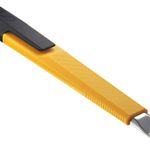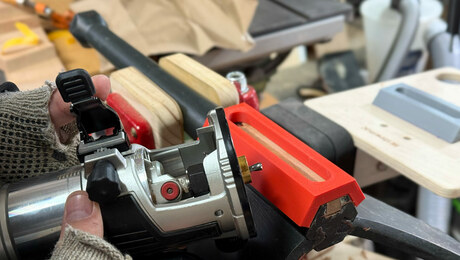Jig for Sliding Dovetail Housings

I use a simple but effective jig to cut housings for sliding dovetails in drawer construction. The jig consists of an L-shaped shelf, a fence to guide the router and a spacer board screwed to the fence from the bottom. The jig is clamped to the front of the workbench from underneath with pipe clamps and is carefully adjusted so the height of the shelf matches the thickness of the drawer stock.
The jig is designed so that housings are cut 1/2 in. from the end of the workpiece. If necessary, adjust the size of the spacer to locate the housing farther from the edge. The grooves for the drawer bottom are cut in the drawer front and sides before the jig is used.
To use the jig, butt two sides up to the stop as shown, with the grooves at the far side of the drawer stock. Move the router in from the front of the jig, and stop the cut at the groove. To cut the housings in the drawer front, place the front so it faces in the opposite direction, with the bottom groove in front. Rout through the groove, stopping the cut for the housing at the desired distance from the top edge (usually 1/2 in. or so). This way, the sliding dovetail is not exposed at the top edge of the drawer’s front.
To rout the male dovetails, I use a tall fence on my router table with the router attached to the back of the fence and the bit running parallel to the table. I recommend cutting one side of the dovetail on all the pieces, then resetting the fence and cutting the other side with the same face against the table as before. The principle of always working relative to one face will ensure that all dovetails will be the same size.
Barrie Graham, Arundel, Que., Canada
Fine Woodworking Magazine, December 1987 No. 67

Fine Woodworking Recommended Products

Freud Super Dado Saw Blade Set 8" x 5/8" Bore

Festool DF 500 Q-Set Domino Joiner

Olfa Knife




















Log in or create an account to post a comment.
Sign up Log in